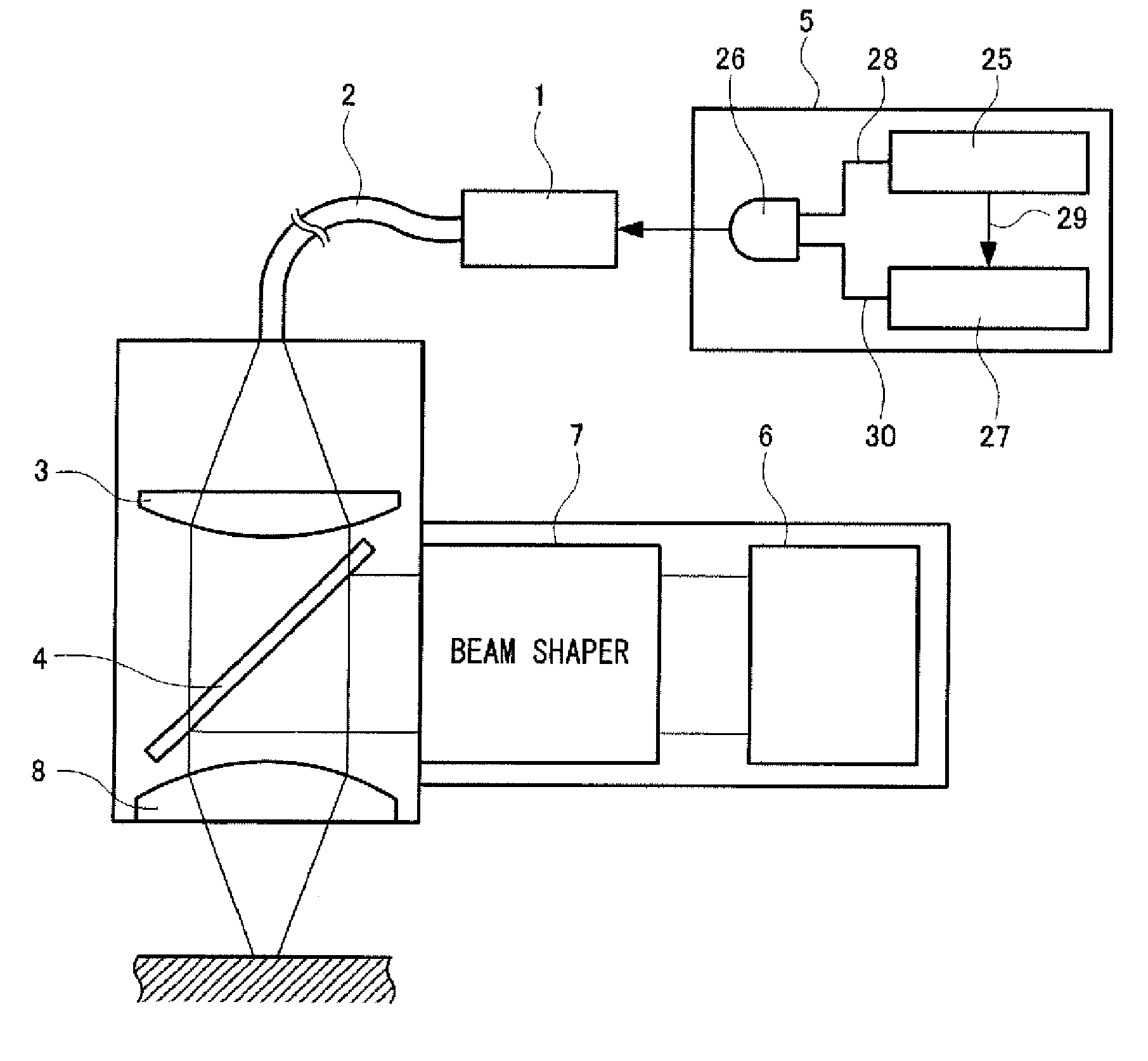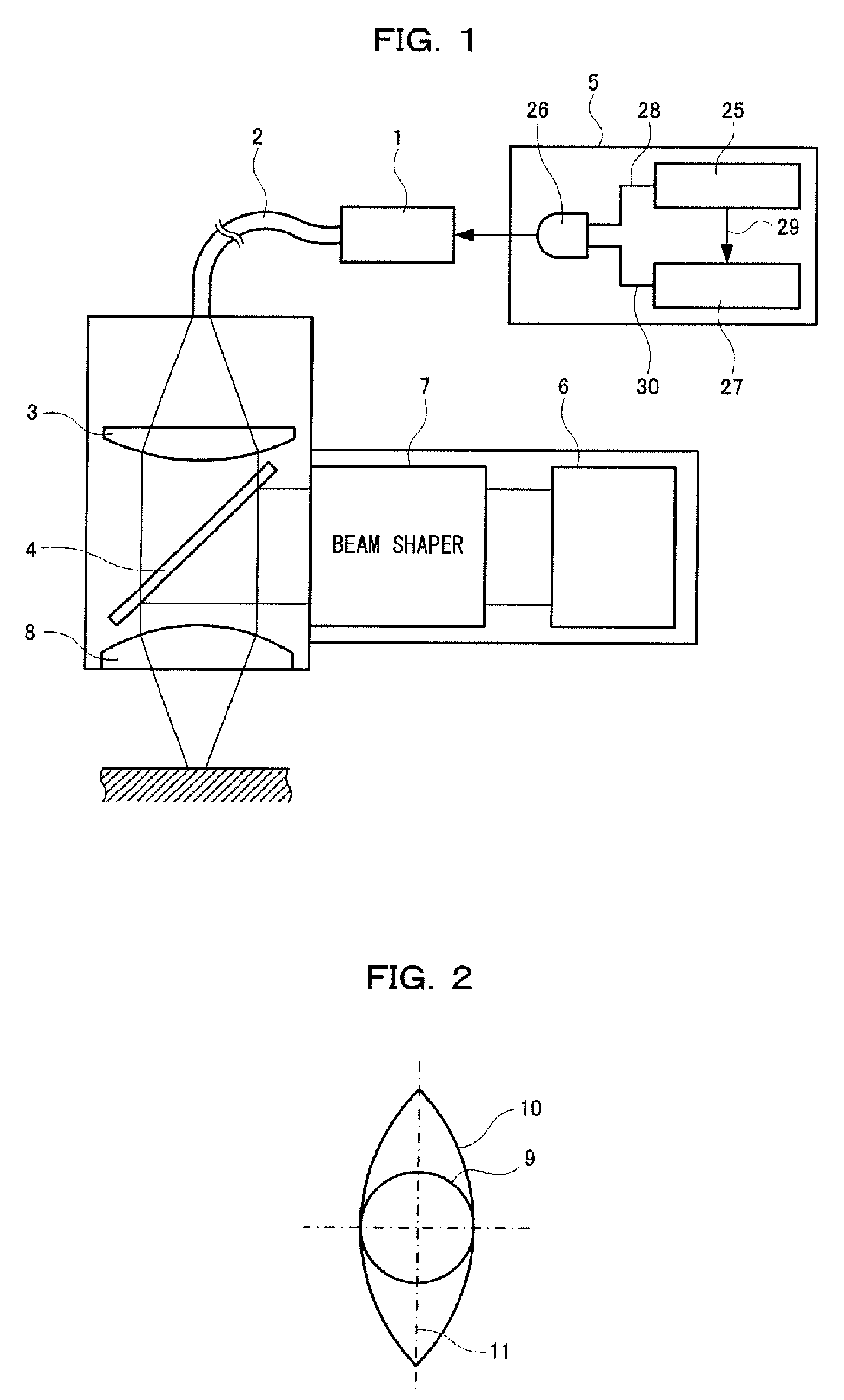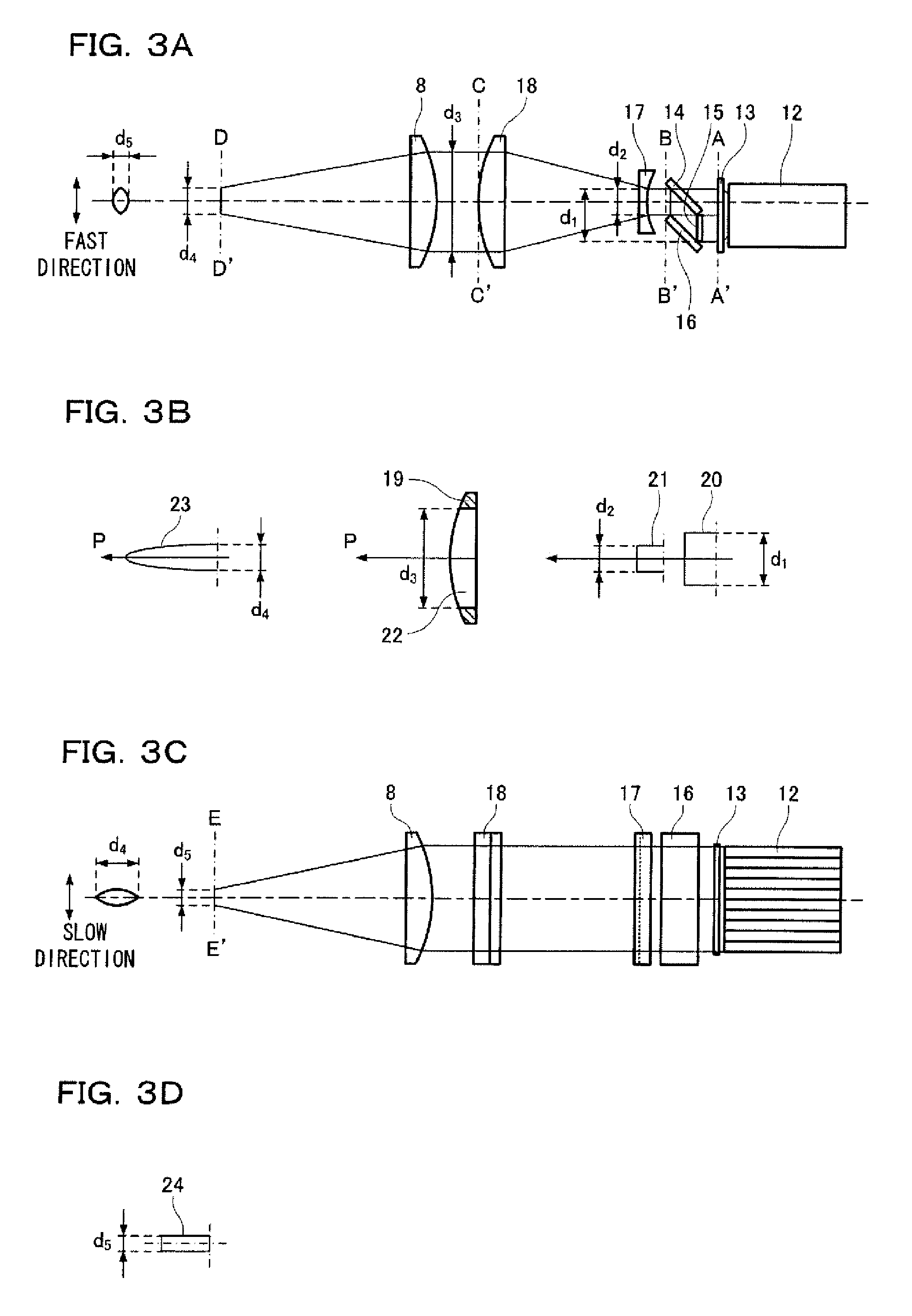Laser apparatus and manufacturing method of a battery
a laser apparatus and battery technology, applied in the field of laser apparatus and battery manufacturing method, can solve the problems of lithium battery, lithium battery, lithium battery, etc., and achieve the effect of reducing welding speed suppressing power fluctuation of pulsed laser light, and stabilizing penetration amoun
- Summary
- Abstract
- Description
- Claims
- Application Information
AI Technical Summary
Benefits of technology
Problems solved by technology
Method used
Image
Examples
Embodiment Construction
[0036]An embodiment of the present invention will now be described with reference to the drawings. FIG. 1 is a schematic diagram showing an example of a general configuration of a laser apparatus according to an embodiment of the present invention. The laser apparatus includes a YAG pulsed laser oscillator (first laser oscillator) 1 that oscillates a pulsed laser light with a wavelength of 1064 nm. A pulsed laser light oscillated by the oscillator 1 passes through a GI optical fiber 2 with a core diameter of 0.8 mm and is incident to a collimator lens 3. Subsequently, the pulsed laser light collimated by the collimator lens 3 is incident to a dichroic mirror 4.
[0037]In addition, although not shown, a YAG rod and an excitation light source are installed into the YAG pulsed laser oscillator 1. A pulse power source 5 for the excitation light source generates a current signal for causing the YAG pulsed laser oscillator 1 to oscillate a pulsed laser light of a desired pulse width and a p...
PUM
| Property | Measurement | Unit |
|---|---|---|
| Time | aaaaa | aaaaa |
| Time | aaaaa | aaaaa |
| Current | aaaaa | aaaaa |
Abstract
Description
Claims
Application Information
 Login to View More
Login to View More - R&D
- Intellectual Property
- Life Sciences
- Materials
- Tech Scout
- Unparalleled Data Quality
- Higher Quality Content
- 60% Fewer Hallucinations
Browse by: Latest US Patents, China's latest patents, Technical Efficacy Thesaurus, Application Domain, Technology Topic, Popular Technical Reports.
© 2025 PatSnap. All rights reserved.Legal|Privacy policy|Modern Slavery Act Transparency Statement|Sitemap|About US| Contact US: help@patsnap.com



